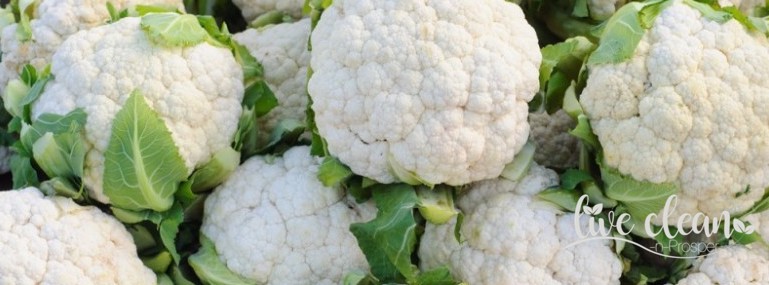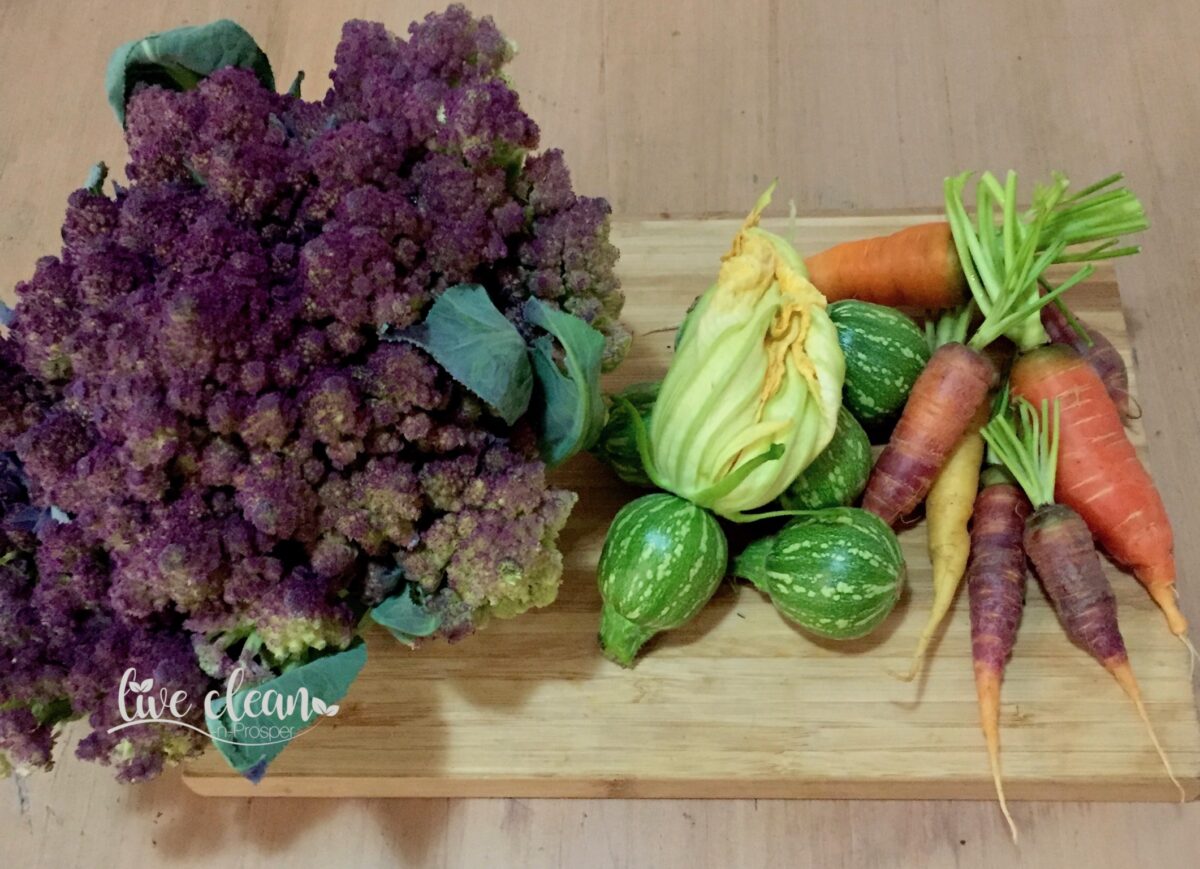Todays’ post is about Cauliflower. I found out this week that cauliflower aids the body’s detoxification system. This was new information for me.
So I’ve decided to learn a bit more about this vegetable and share the results.
Cauliflower is a member of the Brassica family, better known as cruciferous vegetables. It contains fiber that helps with the feeling of satiety, weight loss and a healthy digestive tract. It is is not only low in calories but also packed with vitamins and minerals.
May be a ‘Super food’
It seems every week experts are calling a food ‘super food’. To be given this label the food needs to be ‘nutrient rich and considered especially beneficial for health and wellbeing’.
Well, this versatile vegetable also contains antioxidants and phytonutrients that can protect against cancer, choline that is important for learning and memory, and many other important nutrients.
Raw cauliflower is rich in the antioxidant vitamin C, which is required for tissue growth and tissue repair in all parts of the body.
It is also necessary for the formation of the important protein collagen, which is used to make skin, tendons, ligaments, scar tissue, and blood vessels.
Cauliflower contains decent amounts of vitamin K, which has anti-inflammatory properties. Studies also suggest that vitamin K aids in preventing bone loss in both men and women and that it might also decrease the risk of heart disease.
Regular consumption of cauliflower assists healthy blood circulation and aids in maintaining blood vessels, which is attributed to the presence of sulforaphane.
Aids in ‘detoxification’.
Cauliflower also contains a phytonutrient that together with sulforaphane, helps activate and regulate the function of detoxifying enzymes.
These nutrients are important for Phase I detoxification along with sulfur-containing nutrients essential for Phase II detox activities.
Other compounds found in cauliflower are very important for helping the body detox due to their function to support the liver.
These compounds stimulate what are known as ‘Phase II enzymes’, the natural antioxidant system of our body. They help trigger the liver to produce detoxifying enzymes that block free radical damage. At the same time, sulforaphane stimulates detoxification and digestion by preventing bacterial overgrowth occurring in the gut.
Sources; http://www.well-beingsecrets.com/ and http://www.mercola.com/
Minimal cooking
Cooking is harmful to the nutritional content of cauliflower. Cooking for thirty or more minutes reduces health benefits by 75%. So the lesson here is to steam your cauliflower so it’s just tender, or eat it raw.
There was so much more information available on the health benefits of cauliflower. Who would have thought that this humble and unpopular vegetable could contain so many health-promoting nutrients?
It seems that incorporating cauliflower into our daily diet would be a smart strategy to protect against many health conditions.
Till the next post,
Live Clean n Prosper


